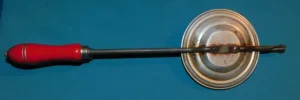The Vintage Sandwich Toaster: History, Usage, and Legacy

A Brief History
The vintage sandwich toaster, also known as a pie iron or jaffle iron, has a fascinating history dating back to the early 20th century. The first patents for these devices emerged in the United States and Australia during the 1920s and 1930s. Originally crafted for camping, these cast iron contraptions enabled users to cook sealed, hot sandwiches over an open flame. By the mid-20th century, electric sandwich toasters gained traction as popular household gadgets, bringing the convenience of toasted sandwiches indoors.
Usage: A Culinary Revolution
The main purpose of a vintage sandwich toaster is to produce hot, sealed sandwiches by pressing and toasting bread with assorted fillings. The process is straightforward: place a buttered slice of bread on one side of the toaster, layer on fillings like cheese, ham, or even fruit, then cover with another buttered slice. Close the toaster, clamp it shut, and cook over a heat source or plug in the electric version.
In camping scenarios, cast iron pie irons were either nestled directly into the fire or situated on a camp stove, offering versatility for outdoor cooking. As electric models gained traction, they brought the same versatility into home kitchens. These appliances provided a swift, convenient method for meal prep, earning favor among busy families.
